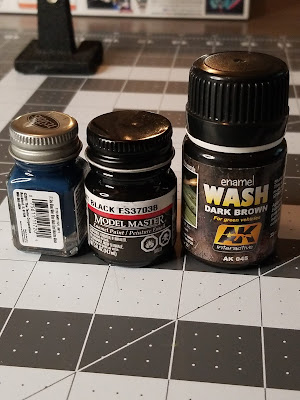Extreme Squad Lupus
My painted build of the Extreme Squad Lupus conversion for FM barbatos. This was an excellent quality kit. The molding is crisp and details are beautifully rendered in soft, sandable resin. It was de-nubbed easily and with minimal dust by method of wet sanding under running water. I prepared the surface by sanding with 400, then 800, then 1000 grit sanding sponge. Then primed with Mr. Surfacer 1000. There were a few spots that should have been fixed with putty but I missed them at the time. A lesson for next time. Several parts had difficulty retaining paint, chipping down to bare resin after masking several times. (Side skirts, sheathes, and shoulders.) I eventually got paint to stick to these parts using a very thin putty as a tack coat. List of paints used: Gold 1 (light): Gaianotes EX Gold Gold 2: Tamiya TS-23 of which I decanted 40 ml then added 5 drops of clear yellow lacquer (Gaia) Grey 1: NAZCA mechanical surfacer Grey 2: NAZCA super heavy surfacer Metal 1 (grey): Trucolor grap


